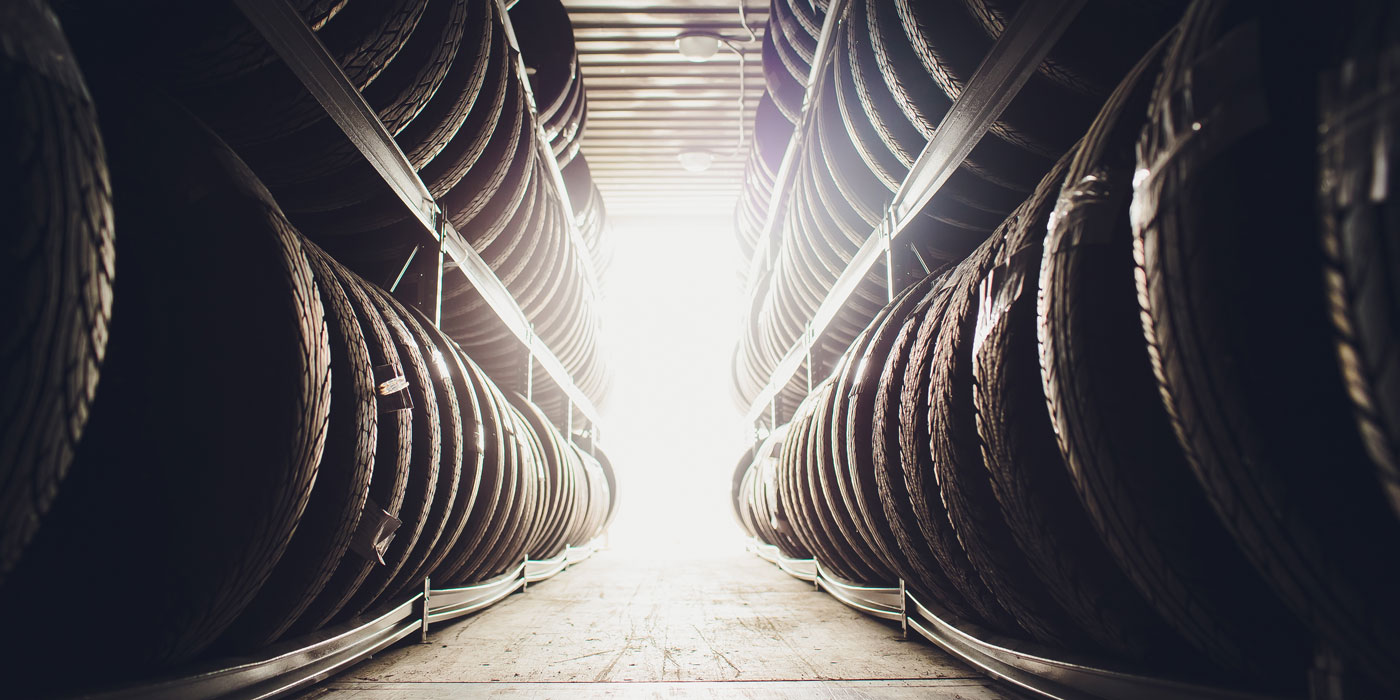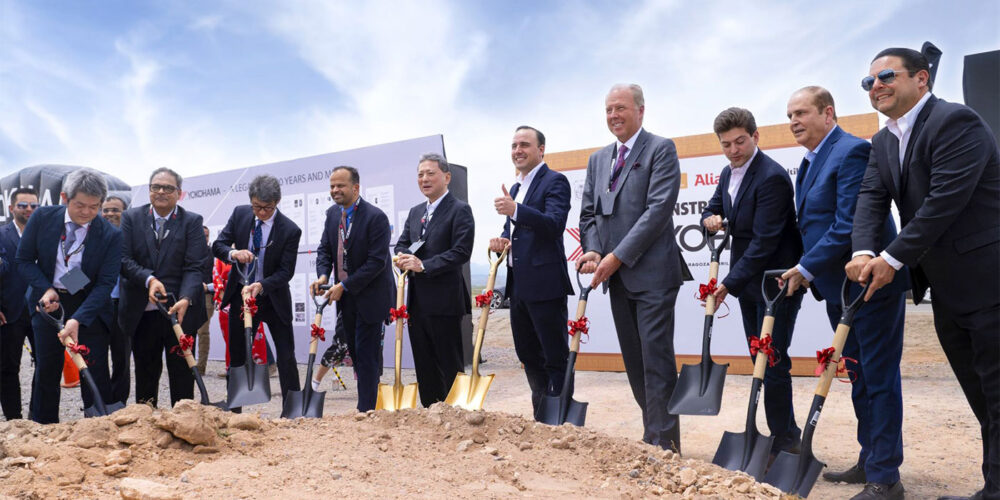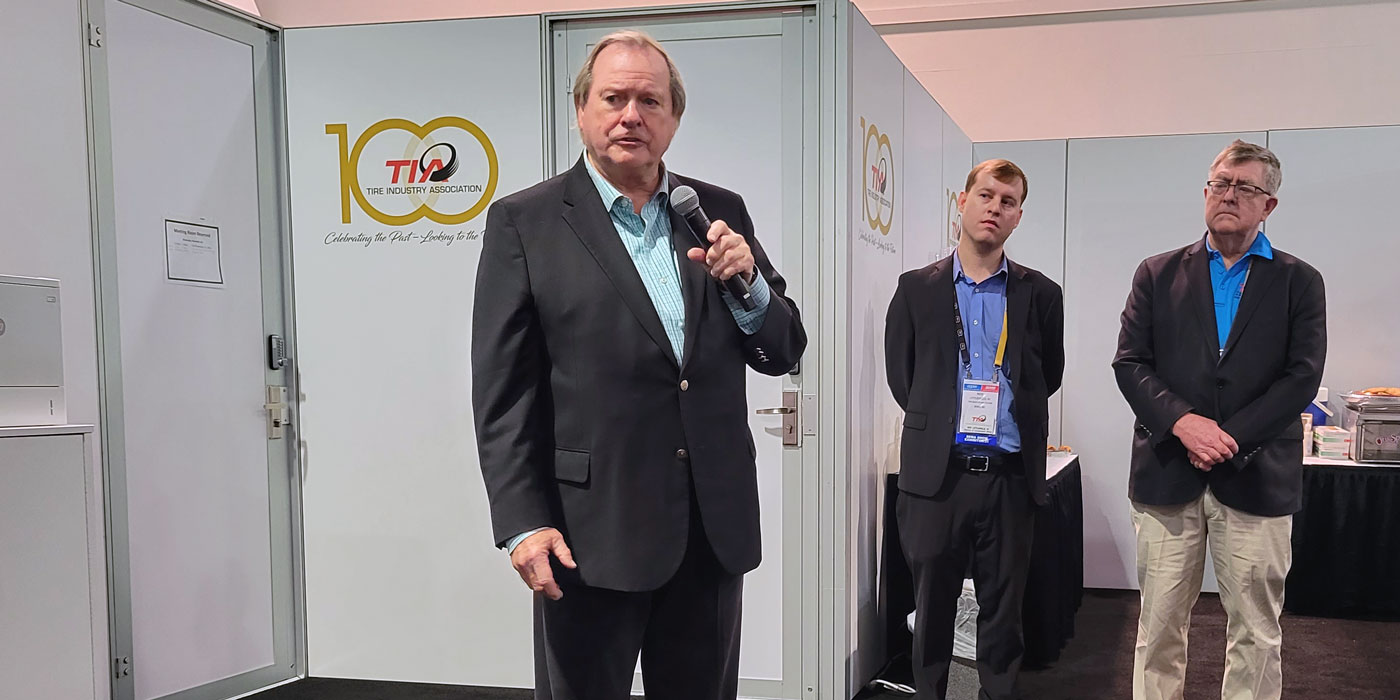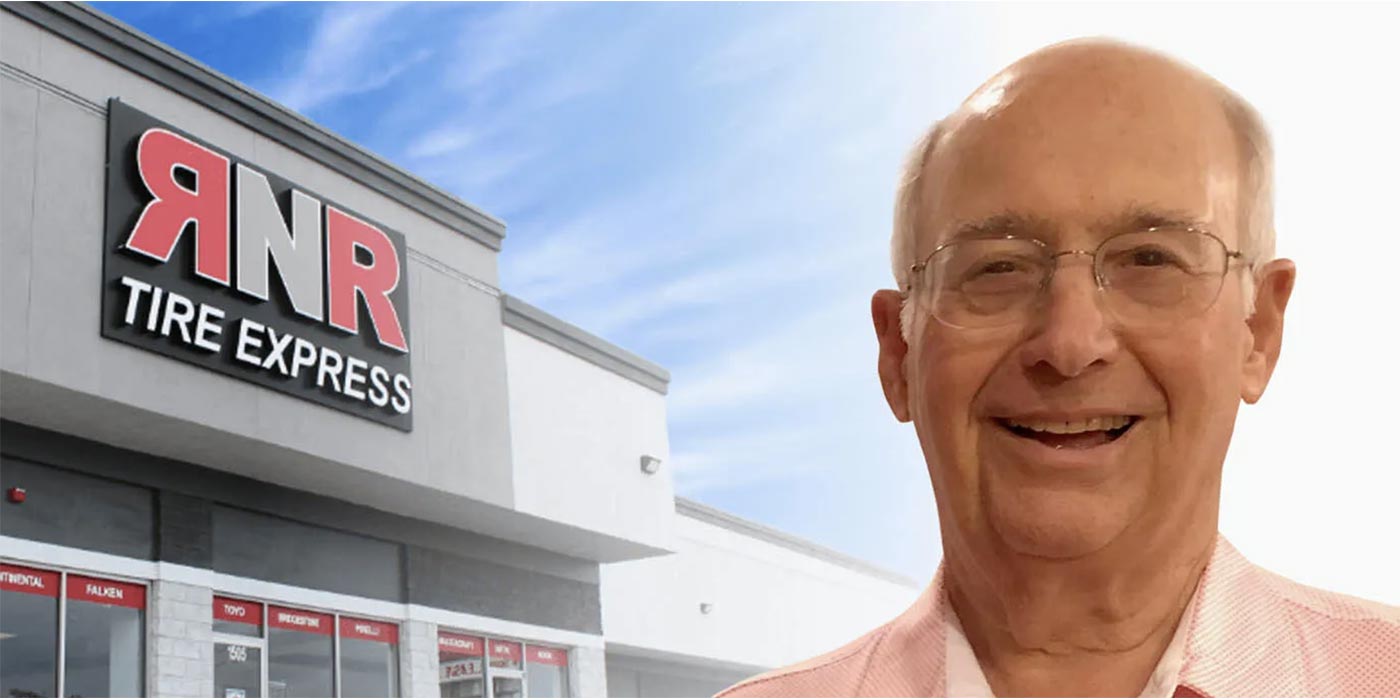In the world’s largest truck assembly plant, the Mercedes Benz facility in the German town of WÖrth, more than 100,000 vehicles are manufactured during the course of a year, and not a single one has an identical twin.
One component affected by the uniqueness of each vehicle is the tyre. When ordering a new truck the freight forwarder or fleet operator can select what tyre he would like to see fitted to his new acquisition. In the past such a choice formed an integral part of each purchase and led to the situation where Michelin held enormous quantities of shares in a number of truck manufacturers, in some cases to the extent that supply amounted to “single sourcing.”
In recent times this situation has become much less pronounced, and this shift was accompanied by Michelin declaring a change in strategy at the Commercial Vehicle IAA in 2004, indicating that it wished to shift their focus more towards the aftermarket business. Nevertheless, Michelin remains the undisputed market leader in Europe.
Today, Peter Matzke, Continental’s global head of OE truck tires, estimates the proportion of consumers desiring a particular brand of tyre for a tractor unit or bus at somewhere between 10% and 20%. This figure varies from one brand of truck to another and is also affected on whether the vehicle is intended for long distance, suburban or off the road use.
Both vehicle manufacturers and end users display a strong preference for “branded articles” to be fitted on their new trucks. In Europe these premium tyres include Bridgestone, Continental, Goodyear, Michelin and – due largely to Iveco – Pirelli.
In the OE business a manufacturer’s second or third tier brands only have a slight chance of being fitted, although exceptions to this rule, usually due to historical or other market specific reasons, do exist. For example, Continental’s Barum brand has developed a good reputation in Eastern Europe, as is the case with Matador, a brand also now part of the Conti family. Bridgestone’s second brand Firestone has cultivated a good image in the Iberian Peninsula, and Dunlop as well as Fulda have forged a name for themselves in the OE trailer tyre segment. It seems that the perceived necessity to fit premium brand tyres to trailer units is smaller than with tractor units and buses.
However, Matzke pulls no punches when commenting on the issue of second brands: “the distribution channel for original equipment truck tyres is a premium channel, and for us is not a multi brand business.”
Matzke points out that large-scale premium suppliers also have the dual function of “logistics service operators,” meaning they essentially have to act as wheel assembly stations, handling the brands of all their competitors.
Continental operates assembly plants in Germany (Ulm and Berlin), while Goodyear has a facility in Luxembourg and the Michelin subsidiary Fitlog B.V. is located in Hertogenbosch, the Netherlands. The service provider knows which tyre brand is required to be fitted about one or two weeks before the assembly of the complete tyre wheel takes place at the vehicle manufacturers. But of course tyre manufacturers knows how many tyres they must make available earlier – the nearer the date of assembly at the vehicle manufacturer, the more precise the details – and can thus plan production at their factory.
Uniform manufacturers’ OE prices for a particular tyre size or axle position do not exist. How each individual premium brand is positioned in terms of price ranking is a well-guarded secret. Naturally, price mechanisms in the OE business are, above all, subject to market mechanisms, with the supplier striving to obtain as high a price as possible while the customer, the vehicle manufacturer, makes every effort to push prices down.
In response to these strong market factors tyre manufacturers attempt to promote the superior technology inherent in their tyres as a means of creating a point of difference against their competitors, and to some extent acceptable margins are obtained by these means. This “technological reinsurance” (according to Matzke) gives a tyre maker like Continental the certainty of offering products that are – to quote a well-known Continental slogan – “state of the art.”
It is common knowledge that OE margins for tyre manufacturers are distinctly smaller than margins in the aftermarket business. Premium suppliers nevertheless engage in OE business as there are reciprocal effects to be gained from engaging in both sectors, as Matzke explains: Customers – fleet operators and carriers – make decisions based on rational factors such as costs. If an OE tyre fulfils their expectations, there is a strong chance that it will become the aftermarket tyre of choice.
And if the customer is satisfied with their aftermarket tyre choice, the chances are that the customer will select it as the preferred tyre option when ordering their next new vehicle. And it is also worth mentioning that the demarcation between original equipment and aftermarket is completely different for truck tyre consumers compared with passenger car tyres. A number of further factors must be added into the equation, including mileage, retreadability and the value of the carcass.
The ability to regroove or retread a truck tyre is of importance when deciding upon a tyre, as is safety. Further points of significance to commercial vehicle manufacturers are tyre weight and noise considerations. And while wider community concerns about the environment have led to rolling resistance virtually becoming a tyre industry buzzword, the fleet operator will take rolling resistance into consideration primarily for financial reasons – the tyre’s cost per mile. For the customer, economic considerations are number one. Happily for tyre manufacturers, environmental and financial considerations are, to a degree, intertwined. Tyres with the cheapest purchase price, both OE and aftermarket, are rarely the most financially economical in the long term nor the most environmentally sound.
The truck tyre business is one that is consultation intensive, particularly during a tyre’s development. During its technical development a truck tyre will undergo the same fundamental stages as a passenger car tyre, however the processes involved are more time intensive. The technological life cycle of a truck tyre concept nowadays is approximately about 8 to 10 years, although it must be pointed out that the life cycle of a truck is much longer than that of a passenger car, and this has an effect on test procedures.
On the one hand, vehicle manufacturers become involved in testing with the tyre supplier at a very early stage in the process, but on the other they are also required to conduct their own separate tests. The intensity of the partnership between manufacturer and supplier depends very much on the particular parties involved and each partnership is different.
On the whole the frequently trumpeted “development partnership” between manufacturers and suppliers is very similar to that of passenger car tyres. The two parties work together, with the tyre partner becoming involved in the development of requirement specifications for the vehicle and proactively deciding which proposed specifications are feasible and which are incompatible with other criteria from the tyre’s requirement list and/or not economically viable. “Vehicle manufacturers and suppliers sit in the same boat,” commented Matzke. “Both are focused upon the interests and demands of the end user.”















